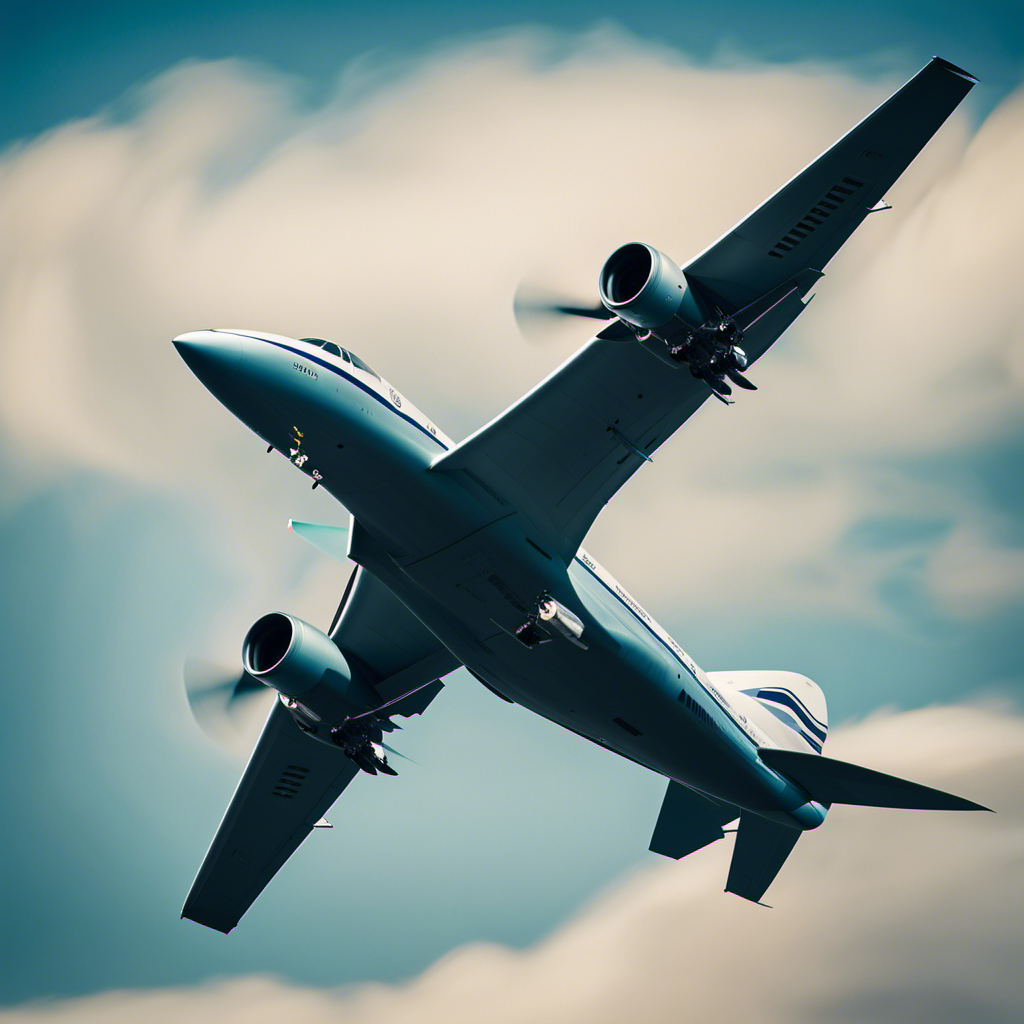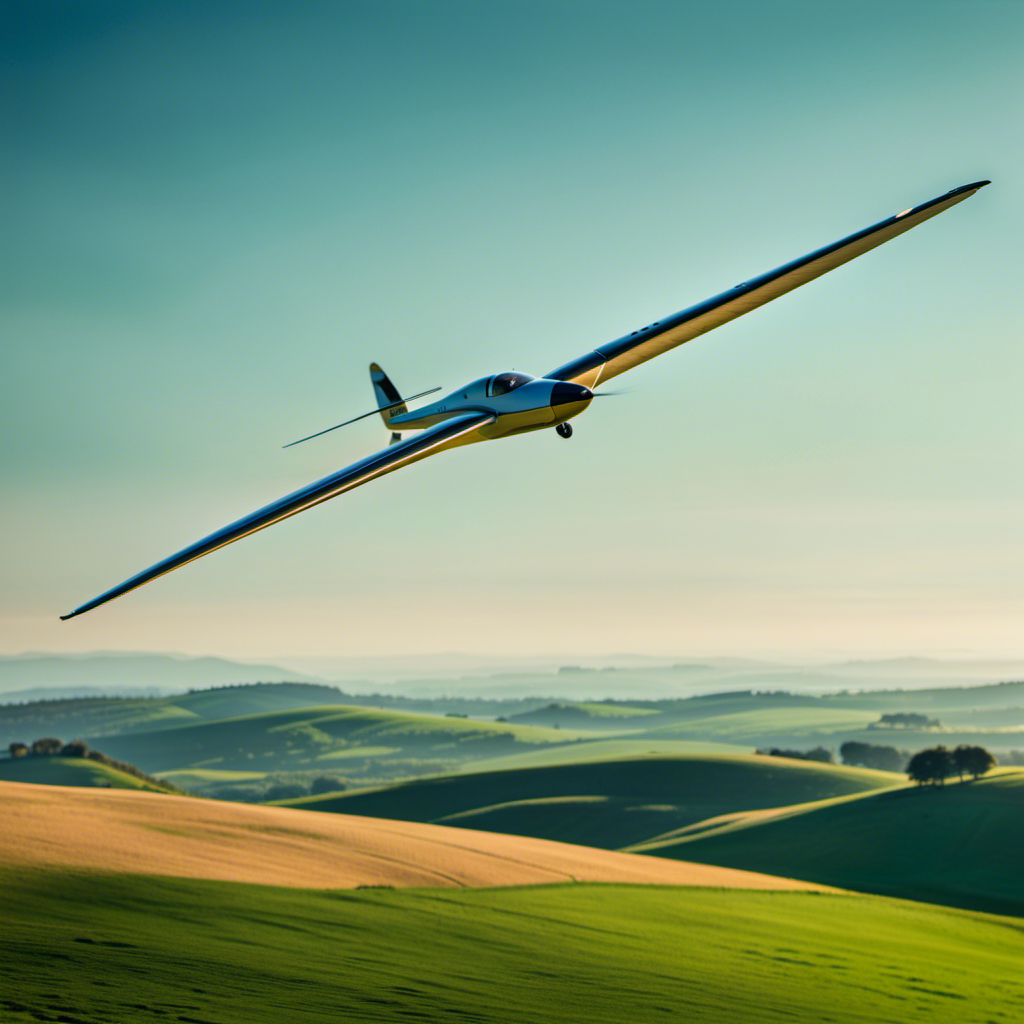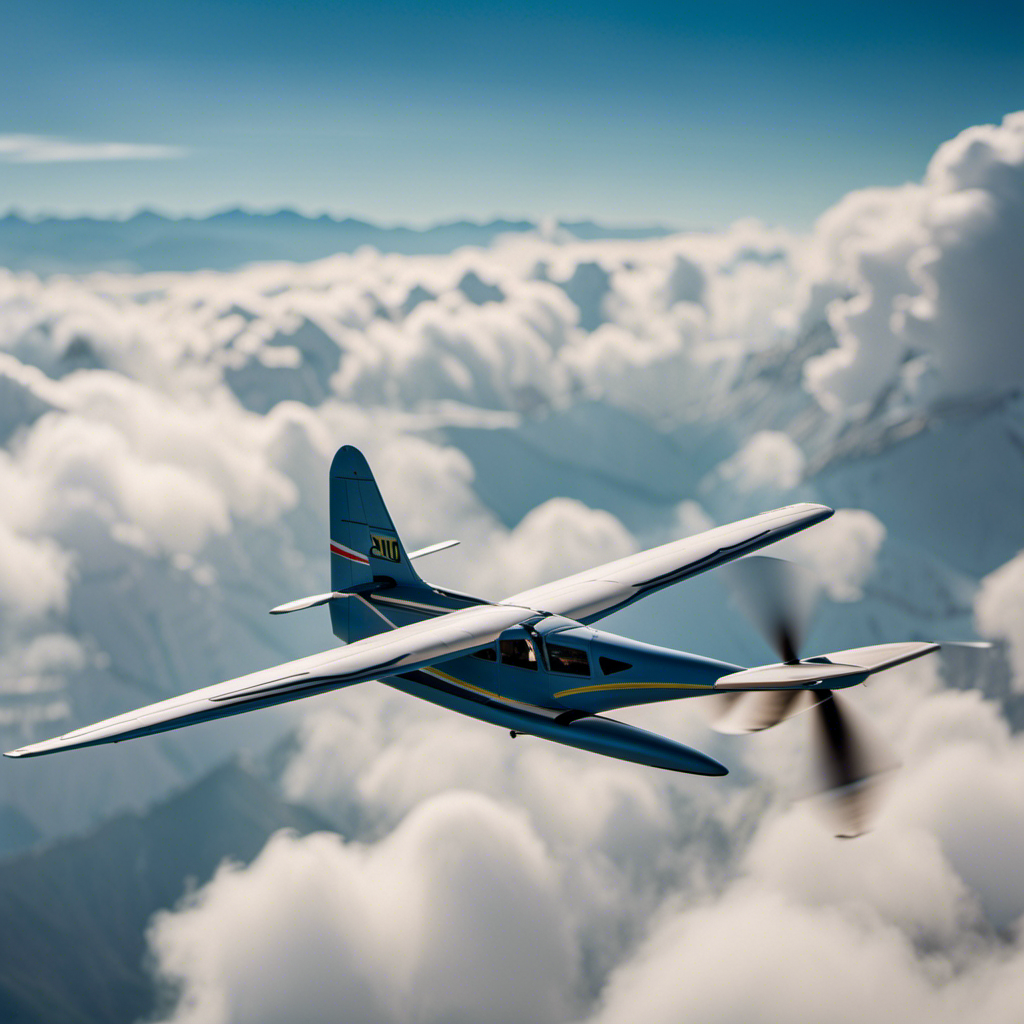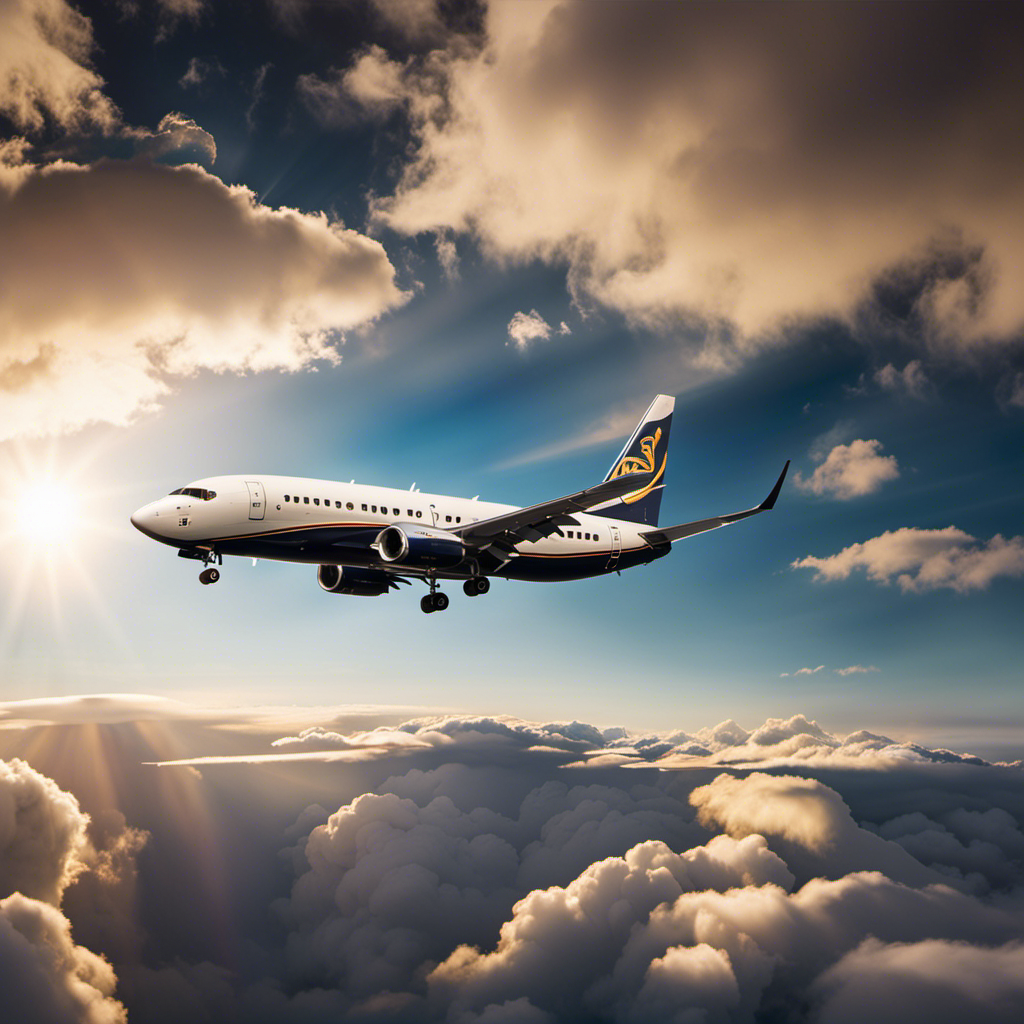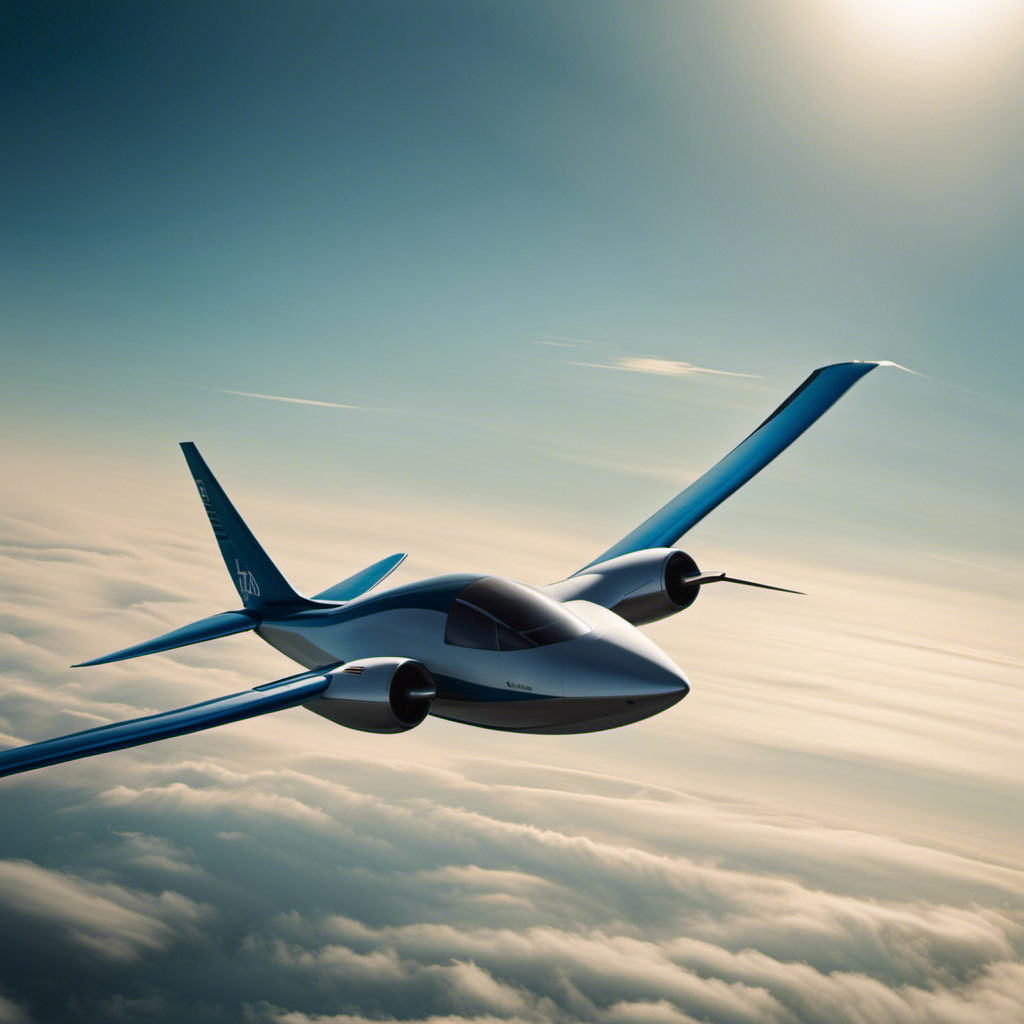I’ve always been fascinated by the graceful art of flying through the air. As a pilot, it is vital to find the perfect cruising speed to ensure a flight is not only safe but also efficient.
In this article, we will delve into the basics of glide speed, exploring the factors that influence it and the techniques to calculate and maintain the best speed.
We’ll also discuss how to adjust for emergency situations and the importance of seeking professional guidance.
So, let’s strap in and master the art of achieving the best glide speed.
Key Takeaways
- Trim adjustment is important for relieving control pressure and optimizing glide speed and control during critical flight phases.
- Monitoring airspeed indicators is crucial for ensuring the aircraft remains within the desired speed range and allows necessary adjustments to trim and control inputs.
- Adjusting for decreasing airspeed involves increasing power or adjusting pitch to prevent the airspeed from falling below the desired range and maintain safe and controlled flight.
- Adjusting for increasing airspeed involves reducing power or adjusting pitch to bring the speed back within the desired range and ensure safe and controlled flight.
Understanding the Basics of Glide Speed
To get the best glide speed, it’s important to understand the basics. Factors affecting glide performance include weight, airspeed, and angle of attack.
Weight has a significant impact on glide speed. The heavier the aircraft, the faster it will descend during a glide. This is because more weight creates a greater drag force, which slows down the aircraft’s forward motion. Additionally, a heavier aircraft requires a higher airspeed to maintain lift, resulting in a faster glide speed.
Understanding the impact of weight on glide speed allows pilots to make informed decisions about fuel consumption and endurance. By managing weight effectively, pilots can optimize glide speed and maximize the aircraft’s performance.
Now, let’s explore other factors that affect glide speed.
Factors Affecting Glide Speed
Remember, your glide speed can be influenced by various factors. Understanding these factors is crucial for maintaining aircraft performance and ensuring safety, especially in emergency situations.
One of the key factors affecting glide speed is the weight of the aircraft. Heavier aircraft tend to have higher glide speeds due to increased momentum.
Another factor is the configuration of the aircraft, such as the position of flaps and landing gear. These affect the aerodynamics and drag, which in turn impact glide performance.
Additionally, weather conditions like wind speed and direction play a significant role in determining glide speed. It is important to consider these factors when calculating the best glide speed for your aircraft, as I will explain in the subsequent section on ‘calculating the best glide speed.’
Calculating the Best Glide Speed
When it comes to calculating the best glide speed for an aircraft, there are two key factors to consider. First, using the aircraft’s performance charts is essential. By referring to these charts, I can determine the optimum airspeed that will allow the aircraft to cover the maximum horizontal distance during a glide. This information is crucial for planning and executing a successful glide.
Secondly, taking into account the aircraft’s glide ratio is important. The glide ratio represents the ratio of horizontal distance covered to vertical distance descended. Understanding this ratio gives me a better understanding of the aircraft’s efficiency in gliding. It helps me gauge how far the aircraft can travel horizontally while descending vertically.
Considering both the performance charts and the glide ratio together allows me to calculate the best glide speed for the aircraft. This information is vital for pilots, as it helps them make informed decisions during emergency situations or when faced with engine failure.
Using the Aircraft’s Performance Charts
Using the aircraft’s performance charts can help you determine the best glide speed. By utilizing these charts, you can optimize your glide distance and increase your chances of a safe landing in the event of an engine failure.
The performance charts provide valuable information such as the aircraft’s glide ratio, which is the ratio of horizontal distance covered to vertical distance descended during a glide. This information allows you to calculate the most efficient speed at which to glide, maximizing your glide distance.
Once you have determined the best glide speed based on the performance charts, you can then consider other factors such as wind speed and direction to further refine your glide plan. Considering the aircraft’s glide ratio, in addition to the performance charts, is crucial in ensuring a successful glide and a safe outcome in an emergency situation.
Considering the Aircraft’s Glide Ratio
To optimize your glide distance, it’s important to take into account the aircraft’s glide ratio. The glide ratio analysis allows us to determine how far the aircraft can travel horizontally while descending vertically. By understanding this ratio, we can make informed decisions to optimize our glide performance.
Here are three key factors to consider when analyzing the glide ratio:
- Weight: Heavier aircraft tend to have a lower glide ratio, as more energy is required to maintain lift.
- Speed: The glide ratio varies with airspeed. Finding the optimal speed for your aircraft can significantly improve your glide distance.
- Configuration: The position of flaps and landing gear affects the aircraft’s drag and consequently its glide ratio.
Now that we have explored how to analyze the glide ratio, let’s discuss adjusting for emergency situations without compromising safety.
Adjusting for Emergency Situations
In emergency situations, you’ll need to quickly adjust your glide speed to ensure a safe landing. When unexpected events occur, such as engine failure or loss of control, maintaining control of the aircraft becomes crucial. Adjusting your glide speed allows you to control the descent rate and optimize your chances of a successful landing. To help you understand the importance of adjusting glide speed, consider the following table:
| Situation | Glide Speed Adjustment | Result |
|---|---|---|
| Engine failure | Increase glide speed slightly | Maintain momentum during descent |
| Loss of control | Reduce glide speed | Regain control and stability |
| Strong headwind | Increase glide speed significantly | Counteract wind resistance |
| Short landing area | Decrease glide speed significantly | Reduce ground roll and stopping distance |
Techniques for Maintaining the Best Glide Speed
When it comes to managing pitch and power, it’s crucial to maintain a proper balance to achieve optimal performance in the aircraft.
By adjusting the pitch, I can control the nose-up or nose-down attitude. Manipulating the power controls the amount of thrust generated.
Furthermore, utilizing trim controls allows for fine-tuning the aircraft’s balance and reducing control pressures.
Lastly, monitoring airspeed indicators is essential. It ensures that I’m flying at the appropriate speed for the given situation. This could be maintaining a steady glide or cruising at a designated airspeed.
Managing Pitch and Power
Adjusting pitch and power is essential for achieving the best glide speed. When managing airspeed and maintaining altitude, there are several factors to consider:
-
Nose pitch: Adjusting the angle of the aircraft’s nose affects its descent rate. Raising the nose increases drag, slowing the aircraft down.
-
Throttle control: Regulating engine power allows for fine-tuning the descent rate. Reducing power decreases speed, while increasing power can help maintain altitude.
-
Flap configuration: Extending flaps increases drag, reducing the glide speed. Selecting the appropriate flap setting is crucial for maintaining the desired glide performance.
-
Trim adjustment: Utilizing the trim controls allows for relieving control pressure, helping to maintain the desired pitch attitude and glide speed.
By carefully managing pitch and power, pilots can optimize their glide speed and maintain control during critical flight phases.
Now, let’s explore how utilizing trim controls further enhances our ability to achieve the best glide speed.
Utilizing Trim Controls
Utilizing trim controls optimizes the aircraft’s pitch attitude, improving control and efficiency during critical flight phases. The trim adjustment allows me to fine-tune the aircraft’s pitch, ensuring it maintains the desired attitude without constant control inputs.
When controlling descent, proper trim adjustment is crucial to maintain the desired glide path. By adjusting the trim, I can reduce the workload on the control yoke and maintain a consistent descent rate. This not only improves control but also enhances efficiency by reducing drag and optimizing the aircraft’s performance.
However, it’s important to continuously monitor airspeed indicators to ensure the aircraft remains within the desired speed range. Monitoring airspeed indicators allows me to make necessary adjustments to the trim and control inputs to maintain the optimal glide speed.
Monitoring Airspeed Indicators
Monitoring airspeed indicators helps me ensure that the aircraft remains within the desired speed range. By constantly monitoring the airspeed trends, I can make necessary adjustments to maintain a safe and efficient flight. This is especially important when flying in varying wind conditions. Wind can greatly affect the aircraft’s airspeed, making it crucial to adjust accordingly.
If I notice that the airspeed is decreasing, I can increase power or adjust the aircraft’s pitch to maintain the desired speed. On the other hand, if the airspeed is increasing, I can reduce power or adjust the aircraft’s pitch to bring it back within the desired range. By closely monitoring the airspeed indicators, I can effectively navigate through different wind conditions and ensure a smooth and controlled flight.
Transitioning into practicing emergency procedures, I can apply this same vigilance in monitoring airspeed to quickly respond in case of an emergency.
Practicing Emergency Procedures
To practice emergency procedures effectively, you’ll want to familiarize yourself with the appropriate glide speed. When practicing emergency landings or simulating engine failures, knowing the ideal glide speed is crucial for ensuring a safe outcome.
Glide speed refers to the airspeed at which an aircraft can maintain the maximum distance covered for a given altitude loss. It is important to note that different aircraft have different glide speeds, which can vary based on factors such as weight, configuration, and wind conditions.
Understanding and practicing at the correct glide speed allows pilots to optimize their chances of reaching a suitable landing site in case of an emergency. However, it is equally important to understand the limitations of glide speed to make informed decisions during emergency situations.
Understanding the Limitations of Glide Speed
Understanding the limitations of glide speed is crucial for pilots to make informed decisions during emergency situations. When dealing with an engine failure or other critical issues, knowing how to maximize glide distance is essential. However, it is important to note that glide speed is not a fixed value. It varies depending on factors such as aircraft weight, configuration, and atmospheric conditions.
Airspeed indicators play a vital role in providing accurate information about the current speed of the aircraft. Pilots must rely on these instruments to determine the appropriate glide speed for their specific situation. Failure to consider the limitations of glide speed or disregarding the indications of airspeed indicators can lead to undesired outcomes.
Therefore, it is imperative to understand these limitations and use airspeed indicators effectively when making decisions during emergencies. Seeking professional guidance in understanding and practicing these concepts is highly recommended.
Seeking Professional Guidance
After understanding the limitations of glide speed, it is crucial to seek professional guidance to ensure optimal performance. Expert recommendations and professional advice can help pilots navigate the complexities of glide speed and make informed decisions.
Here are three reasons why seeking professional guidance is essential:
-
Expertise: Professionals have in-depth knowledge and experience in the field, enabling them to provide accurate and reliable recommendations for glide speed.
-
Safety: Professional advice ensures that pilots adhere to safety standards and regulations, reducing the risk of accidents and ensuring a smooth and controlled descent.
-
Efficiency: With professional guidance, pilots can optimize their glide speed, resulting in fuel efficiency and cost savings.
Staying Current and Proficient
Staying current and proficient in flying requires pilots to continuously seek professional guidance. As pilots, we understand the importance of staying up-to-date with the latest regulations, procedures, and safety measures. This ensures that we are prepared for any situation that may arise during our flights.
Emergency preparedness is a critical aspect of staying current, as it enables us to respond effectively in the event of an unexpected incident. By regularly attending training sessions, reviewing emergency procedures, and staying informed about new developments in aviation, we can enhance our skills and maintain our proficiency. This commitment to staying current and prepared ultimately contributes to safer flying experiences for ourselves and our passengers.
Transition: Now that we have discussed the importance of staying current and proficient, let’s move on to the next topic: mastering the best glide speed.
Conclusion: Mastering the Best Glide Speed
Transitioning to the conclusion, it’s important to know the optimal speed for gliding. Mastering techniques and emergency procedures are vital to ensure a safe and successful glide. Here are three key factors to consider when determining the best glide speed:
-
Aircraft Performance: Understanding the capabilities of your aircraft is crucial. Different aircraft have varying glide ratios and speeds. Consult your aircraft’s manual or seek guidance from an experienced instructor to determine the specific glide speed for your aircraft.
-
Wind Conditions: Wind direction and speed can greatly affect your glide performance. Adjust your speed accordingly to take advantage of tailwinds or minimize the impact of headwinds.
-
Environmental Factors: Consider the altitude, temperature, and terrain when determining the optimal glide speed. Higher altitudes may require faster speeds, while warmer temperatures may necessitate a slower glide to prevent overheating.
Frequently Asked Questions
How do I determine the best glide speed for my specific aircraft?
To determine the best glide speed for my specific aircraft, I consider factors such as weight, wind conditions, and aircraft performance data. This is crucial for aviation safety as it ensures optimal control and maneuverability during a glide.
What are some common emergency situations where adjusting the glide speed might be necessary?
Emergency situations requiring glide speed adjustment may include engine failure, loss of power, or fuel exhaustion. Factors affecting glide speed adjustment include weight, altitude, wind conditions, and aircraft configuration. Adjusting glide speed is crucial for safe emergency landings.
Are there any specific techniques or tips for maintaining the best glide speed during an emergency?
During an emergency landing, maintaining the best glide speed is crucial. Factors such as aircraft weight, configuration, wind, and altitude affect glide speed. Techniques like adjusting pitch and using flaps can help maintain the optimal glide speed.
How often should I practice emergency procedures involving glide speed?
I practice emergency procedures involving glide speed regularly to ensure I am prepared for emergency situations requiring glide speed adjustment. It is crucial to familiarize oneself with the techniques and to maintain proficiency in these procedures.
What are some limitations or drawbacks of relying on glide speed in emergency situations?
Relying solely on glide speed in emergencies has limitations and drawbacks. It’s like relying on a single tool in a complex situation. Factors like wind, aircraft weight, and altitude affect glide performance, potentially leading to unfavorable outcomes.
Conclusion
Mastering the best glide speed is crucial for any pilot seeking to soar smoothly through the sky. By understanding the basics, calculating the optimal speed, and adjusting for emergencies, one can navigate the air with finesse.
Techniques for maintaining this speed, while keeping in mind its limitations, will ensure a safe and efficient flight. Seeking professional guidance, staying current, and remaining proficient are key to perfecting this skill.
So, strap in, seek the skies, and savor the sensation of soaring seamlessly with the best glide speed!
With a heart that soars as high as the skies, Aria, affectionately known as “Skylark,” is the driving force behind Soaring Skyways. Her journey into the gliding world began as a young dreamer gazing up at the soaring birds, yearning to experience the weightlessness and freedom they embodied. With years of experience both in the cockpit and behind the scenes, Aria’s commitment to the gliding community is unwavering.
